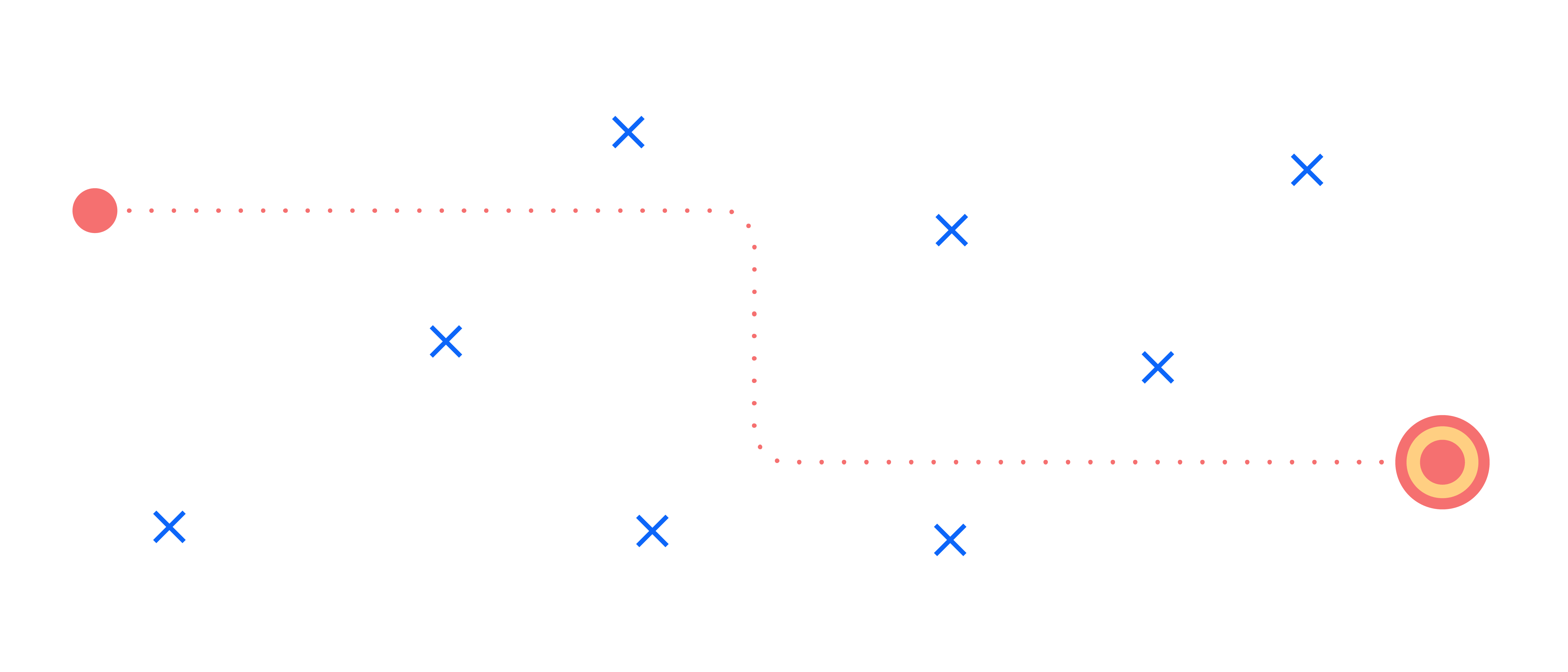How to make automatic SEO work faster at scale with automation

A new way to scale automatic SEO faster
If you have experience with SEO, you’re probably already familiar with “automatic SEO,” the practice of using software to scale website optimization to make SEO automatic...beyond manual methods. However, SEO experts are now using a new approach to orchestrate multi-step SEO processes across different SEO software applications, so they can monitor competitors and immediately take action on massive amounts of SEO data by combining new SEO tactics with the latest automation technology.
Here’s the challenge - you may already be using excellent SEO tools such as Google Analytics, Google Data Studio, Ahrefs, SEMRush, and STAT Search Analytics. But while applications like these are useful automatic SEO tools for researching keywords, tracking competitors, and pulling analytics, they don’t always flow data between themselves. Instead, these solutions output dense, data-heavy spreadsheets, which contain essential data but can require copy-pasting and cross-referencing from sheet to sheet. From day to day. And from week to week. But SEO experts are retiring the practice of juggling multiple spreadsheets for various time frames across every app they use and making their SEO automatic with API integrations and automation. With the tactics we’ll cover here, SEO pros can rapidly isolate keywords and competitor activity at scale to ensure the next project in their queue will always be the most impactful.
Integrating and automating SEO with a General Automation Platform
The first step to skipping all the tedious SEO spreadsheet work is using a General Automation Platform (GAP). A GAP connects completely different apps at the software API level to seamlessly flow data between them while using automation to trigger and cascade multiple data-driven processes among apps - accomplishing in moments what used to take hours. GAPs offer:
Full software integrations for cloud-based apps: Pretty much all current SEO services are cloud-based, web-based apps that a GAP can stitch together to pass important SEO data directly among themselves, rather than leaving SEO professionals with the less-appealing task of outputting multiple spreadsheets from each to then manually cross-reference.
Automated processes with powerful logical operators: In addition to connecting all your automatic SEO tools, a GAP also lets users create sophisticated processes that orchestrate multi-step workflows. A GAP’s workflows can trigger specific functionality from each connected app in sequence using flexible logical operators such as Boolean if/then conditionals, branches, and loops to read and process large datasets row-by-row to truly make your SEO automatic.
Clicks-or-code ease-of-use: GAPs users can build out sophisticated processes by merely dragging and dropping each step. Though GAPs offer full support for scripting if needed, they don’t require any coding, which opens up their use to all business users (not just engineers), including SEO professionals. And their lower barrier to entry means that you can get started in minutes.
Let’s explore some specific, actionable automatic SEO use cases for using a GAP to automate your SEO processes.
Automatic SEO use case #1: Backlinks and domain rating competitor analysis
This first workflow covers how to use a GAP to integrate Google Sheets, Ahrefs, and SEMRush to monitor your competitors’ backlinks and domain rating regularly. Backlinks are simply links from other websites that link to your own, and despite ongoing debate to the contrary, are still a vital factor for having your pages rank highly in search engines. Domain rating is a metric created by Ahrefs to reflect the strength of a particular page’s backlink profile - the more backlinks your page receives from popular websites, the higher your page’s domain rating. To make a long story short (too late), you want your company’s website to have more backlinks and higher domain rating than your competitor’s site. With this automated workflow, you can diagnose your position relative to your competitors automatically on a regular basis:
Part I: Create initial report framework for a specific timeframe

Scheduled Trigger: This initial step kicks off the process on a specific scheduled date. Using a GAP, SEO professionals can set up a report like this to run every hour, day, week, or custom time interval they need.
Count Row / Get Rows Data: These steps format the ensuing report with the rows of data needed to contain backlink and domain rating info.
Date & Time Helpers: This step formats the data by setting a timestamp for the day/time this workflow generates its report.
Part II: Process backlink list and domain rating, generate an aggregate report

Loop Collection: This step iteratively loops through every row of the subsequent Ahrefs and SEMRush data pulls to then populate it into an aggregate report.
Get Domain Rating: This step pulls the Ahrefs domain rating for both your website’s pages and those of your competitors, and loops through iteratively to pull every specified page.
SEMRush: This step pulls the backlinks overview from SEMRush and iteratively loops through every backlink listing specified.
Google Sheets: This final step aggregates all data into a single report in Google Sheets and exports it to a specified location.
Result: This automated workflow collates every relevant backlink and domain rating listing between your website and your competitors’ sites and delivers it to you on a scheduled basis:

A report like this gives you the ability to track your progress against your competitors, as well as an early warning system should any anomalies (like a significant dropoff in backlinks, or a sudden spike in a competitor’s domain rating) occur.
Automatic SEO use case #2: Find high impressions/low CTR pages
In our second workflow, we’ll use a GAP to identify pages on a company’s website that are getting high impressions on a search engine results page (SERP) but have a clickthrough rate (CTR) of zero. Effectively, this workflow catalogs keywords for which specific pages on our company’s website are already ranking highly on Google SERP - but for whatever reason, searchers aren’t clicking on those pages. This workflow lets SEO professionals drive more website visits through the low-hanging fruit of pages that are already ranking at or near position one.
Part I: Formatting and preparing data to match to high-traffic pages

Manual Trigger: This step kicks off the workflow on demand. (It can, of course, also be set to run on a regular schedule instead.)
Google Sheets / Data Helpers / Math Helpers: These steps format the list of high-ranking websites to build out rows for each keyword in question. The workflow will later populate these rows with the keywords for which each page is ranking highly.
Part II: Format the report for any new highly-ranking pages

Boolean Condition: This if/then condition gauges whether there are any new high-ranking pages since the previous report.
Data Storage Helpers: If there are any additional rows of new high-ranking pages, these helpers append new rows to the report to accommodate them.
Google Sheets - Fetch Data: This step then pulls in the new high-ranking pages, if any, to populate them in the report.
Part III: Compare and update search volume in SEMRush and populate the report

Loop Collection Helper: This step iteratively loops through every row of data to parse and collate keyword data for the appropriate website URLs.
SEMRush: This step calls SEMRush keyword volume data for each relevant keyword (for which our website’s pages are ranking highly, but not getting any clicks on SERP).
Data Storage Helpers - Get KW_SV: These data helpers add any additional new keyword volume data for newly-detected keywords and update the most recent SEMRush keyword volume for previously detected keywords.
Google Sheets: The final step outputs an aggregate report in Google Sheets.
Result: This automated workflow identifies all pages on your website that are tracking highly on SERP but not getting actual clicks:

Armed with the knowledge of what pages are already at or near position one, SEO professionals can immediately recommend which pages to optimize to drive more SERP clickthrough.
Automatic SEO use case #3: Full overview of specific keyword ranking by URL
This third workflow uses a GAP to integrate STAT Search Analytics, SEMRush, and Ahrefs. Our goal is to combine Ahrefs URL rating (another backlink measure) with SEMRush search volume and competition data to provide a report that draws a one-to-one correlation between keywords and URLs on your website. The report will provide a full ranking overview for specific keywords at specific URLs, along with volume, traffic, and conversion rate details.
Part I: Pull up STAT URLs and keywords and set timeframes

Scheduled Trigger: This step kicks off the workflow on a regularly-scheduled basis, in this case, weekly.
STAT - List Sites / List Keywords: These steps call website URL and keyword data from STAT Search Analytics to collate into the report.
Date Helpers - Timestamp: These steps set today’s current timestamp and the period for this report (in this case, today through today minus seven days, or a week ago).
Part II: Format keyword and URL rankings

Loop Collection: This helper iteratively loops through the keyword and URL data previously collected and prepares the workflow to list everything side-by-side.
Text Helpers: This Helper formats the keywords and URLs for this report.
STAT - List Rankings: This step pulls keyword and URL rankings from STAT.
Part III: Pull URL rating info from Ahrefs

Boolean Condition - If URL is not empty: This step pulls any URLs that have been called from STAT and prepares to feed them to Ahrefs. If the URL field is empty, the workflow sets the URL field for that keyword to empty (null).
STAT - Get URL Rating / Data Helper: This step calls up the URL rating score from Ahrefs, and the subsequent “set url_rating value” Data Helper appends that score to the appropriate URL to populate into the full report downstream.
Part IV: Pull SEMRush keyword data and compile the final report

SEMRush - KW Volume & Comp: This step calls up keyword volume and composition data in SEMRush to append to the data and rankings pulled up from STAT and Ahrefs.
Data Storage Helpers / get kw_competition / get kw_search_volume: These helpers store all data from previous pulls and prepare them to load each field (keyword, URL list, and website rankings from STAT, URL ratings from Ahrefs, and overall keyword overview from SEMRush) into the subsequent report.
Google Sheets: The final step loads all data from all sources into a single report in Google Sheets.
Result: This workflow compiles SEO data from multiple sources to provide a fully holistic view of their website concerning rankings, keywords, and search volume:

Takeaways
By now, you should have a sense of the way that new technology helps SEO professionals run automatic SEO faster and more efficiently, by collating data across multiple automatic SEO tools to generate actionable insights.
Learn more about how to make your SEO automatic, faster, and more impactful by joining a weekly group demo.
